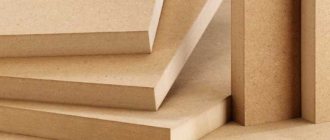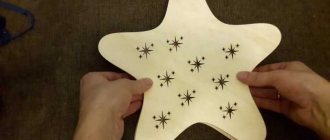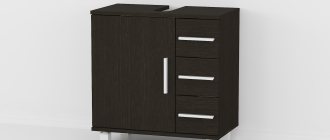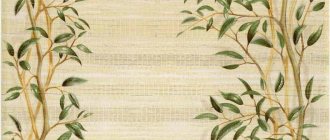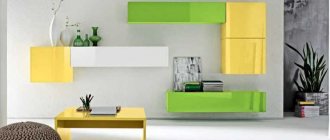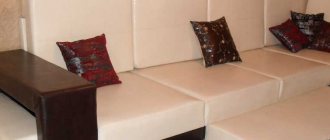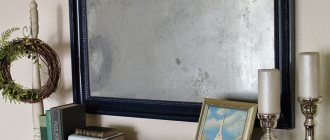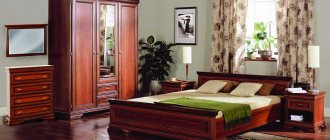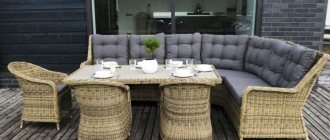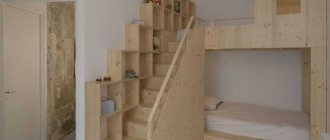Which plywood to choose?
If you are making furniture or just making crafts from wood, don’t forget about plywood.
Do you want to know how to distinguish high-quality plywood, which plywood to choose for making furniture, or know about possible defects in plywood? Do you want to find the right material for templates and jigs, for drawers or frames? Then this article is for you. Pay attention to European birch plywood , produced in the Baltic states and Finland. These sheet materials have high strength and rigidity, have virtually no defects, and their edges look no worse than the front side.
This plywood is made from dense, slow-growing birch wood from the forests of Finland, Russia and the Baltic countries. It is a light wood and rarely has dark streaks. The logs are cut into thin veneer (about 2 mm thick) and then pressed into multi-layer sheets. Compared to birch plywood from other countries, European plywood has almost twice as many layers for the same sheet thickness, making it stiffer, less prone to warping and holding screws firmly even at the edge of the sheet.
In addition, plywood sheets are made only from birch veneer, whereas plywood produced in North America and Southeast Asia is made from different types of wood (usually softwood) and only uses birch on the outer layers.
There are practically no un-glued areas in European plywood, and you are unlikely to encounter an unpleasant surprise when sawing sheets. The edges of this plywood are cleanly processed and allow the production of joints such as dovetails. Furniture boxes that use dovetail joints are now increasingly being made from European birch plywood.
A sheet of European birch plywood with a thickness of 19 mm consists of 13 layers, and a sheet of American birch plywood consists of only seven (five internal and two external).
Plywood classification
criteria by which plywood is classified . The first criterion is the material of manufacture. Plywood can be made from coniferous wood and deciduous wood (primarily birch). Birch plywood is more expensive, but due to the absence of volatile compounds in the wood, characteristic of coniferous species, it is widespread in almost all areas of activity. Pine or spruce plywood is not necessarily made entirely of softwood veneer. To give the material a characteristic structure, it is enough to use coniferous species in the outer layers, and inside it is allowed to use veneer from deciduous trees, except for the more expensive birch.
Depending on the number of layers, plywood can be three, five or multi-layer. Manufacturers prefer to produce plywood with an odd number of layers, because in this case it is more convenient to orient adjacent veneer sheets so that the direction of the fibers is perpendicular, and in the outer layers the fibers are parallel to each other. Although occasionally they also produce plywood with an even number of layers. In this case, the central layers are located perpendicular to the outer ones.
Based on the impregnation material, plywood is divided into five types (what types of fiberboard there are, see here): FB - impregnated with bakelite glue. This is the most waterproof type of non-laminated plywood. Can be used even in tropical climates. Plywood with the FSF classification - impregnated with phenol-formaldehyde glue - is slightly less resistant to aggressive environments. One of the most popular types of this material in Russia. FC – plywood impregnated with urea glue. It can be used for interior work. In the manufacture of FB grade plywood, albumin-casein glue was used for impregnation. This is a non-waterproof type.
Plywood with the BS classification has ultra-high strength. This is the so-called aircraft plywood or delta wood. Previously, it was actually used to build the first biplane aircraft. And now it has found application in the production of furniture: blocks subject to high loads are made from it. And finally, BV is plywood, similar to BS, differing from it only in low water resistance.
According to modern Russian GOST, plywood is divided into five grades, which depend on the presence or absence of external defects in the outer layers. Grade “E” is called “elite”. It has no defects, except minor ones, which do not in any way affect the appearance and performance of the material. The first grade allows cracks in one layer of no more than twenty millimeters. Second grade plywood can have cracks up to two hundred millimeters and glue seeping through the veneer in an area of no more than two percent of the sheet area. The third grade may have wormholes - up to a dozen per square meter with a diameter of no more than six millimeters, and their total number should not be more than nine. And finally, plywood of the fourth, lowest grade. It may have wormholes up to forty millimeters, fallen knots and chipped edges up to five millimeters.
The plywood formats accepted in our country have an aspect ratio of strictly one to two - 1220 by 2440, 1500 by 3000 and 1525 by 3050 millimeters. And only one format has a square shape - 1525 by 1525 millimeters.
Features of European plywood
Although plywood from Finland and the Baltics looks the same in appearance, these materials have a significant difference: moisture-resistant glue is used to connect layers of Finnish plywood, which allows it to be used for outdoor work. Finnish plywood can be recognized by dark glue strips.
The high quality of the wood, thin lines of glue and the dense structure of the sheets allow them to be processed by machine.
Plywood is available in different grades, but for the manufacture of furniture you should choose sheets of the highest quality, grades B-BB. This means that the face layer (shirt) is made from one piece of veneer. There may be tightly installed patches on the back of the sheet and on the inner layers. The outside of the sheets is sanded, but may have a slightly rough surface. Therefore, before finishing, sand them with abrasives up to 220 grit.
The patches on the back side of the sheet are glued in with virtually no gaps, and their color is matched to the surrounding surface
Like any birch wood, this plywood absorbs liquid stain unevenly. Therefore, before painting, treat the surface with conditioner or use a gel stain. With a colorless finish, this problem does not arise.
Plywood on the Russian market
According to their operational purpose, plywood is divided into the following types:
- construction plywood;
- general purpose plywood;
- Bakelized plywood;
- laminated plywood;
- furniture plywood;
- decorative plywood;
- aviation plywood, etc.
There is also a division of plywood by grade, grade, thickness, emission class, design and sheet format, as well as by type of surface treatment and wood species from which it is made. There are five grades of plywood, which are designated differently in accordance with different GOSTs.
| Plywood grade | |
| GOST 3916.1-96 | GOST 3916.1-89 |
| E | A |
| I | AB |
| II | B |
| III | BB |
| IV | C |
All this presupposes the presence of a huge assortment of finished products produced by industry, and sellers are not always able to competently answer customers’ questions about the specifics of the use and further behavior of a particular type/grade of plywood in certain conditions. However, if you are choosing plywood for any important project, you should first find out whether any particular type/grade is suitable for your purposes and conditions.
On the Russian market, plywood is divided into grades depending on the appearance of the surface, into grades according to the degree of water resistance of the adhesive joint, and into sanded and unsanded according to the degree of surface treatment.
The different grades differ mainly in the quality of the veneer and the number of permissible defects.
Plywood grade E (A). This is an elite plywood that does not have visible defects or defects on the surface of the sheets. Occasional defects in the form of violations of the texture pattern are allowed, but the presence of dark eyes on the surface of plywood E is unacceptable. There should also be no knots or holes from them, minor brown veins, wormholes or other defects. Grade E plywood is practically never found in retail trade, as it is usually used to make laminated plywood.
Plywood grade I (AB). The standard allows a maximum length of warped or cracked veneer of no more than 20 cm, as well as no more than three defects such as veneer shortages, healthy or fused knots, holes from fallen knots, sheet edge defects of no more than 2 mm, as well as wormholes with a diameter of no more than 6 mm (up to three per 1 m²).
Plywood grade II (B). A plywood sheet may contain cracks up to 20 cm, wood patches, scratches and dents, the area of which should not exceed 5% of the total area of the plywood sheet. Adhesive seepage in an area of up to 2% of the area of the plywood sheet and veneer overlap in the outer layers of the plywood sheet with a width of no more than 10 cm are allowed. In accordance with the standard, no more than six of the following defects are possible on one plywood sheet: knots (light, dark, healthy and fused) , holes from fallen knots, wormholes (no more than six per 1 m² with a diameter of each of them no more than 6 mm).
Plywood grade III (BB). The following are allowed in a plywood sheet: pin, healthy, partially fused and fallen knots; up to ten wormholes per 1 m² (with a diameter of each no more than 6 mm). The total number of such defects should be no more than nine. Also allowed are patch inserts, gaps in veneer joints (no more than 2 mm wide), glue leakage with a total area of no more than 5% of the area of the plywood sheet, veneer shortages, various edge defects (no more than 20 cm wide), as well as veneer overlap ( width no more than 20 cm).
Plywood grade IV (C). Plywood sheet is the lowest quality of all. In such a sheet, partially fused and fallen knots, wormholes with a diameter of up to 40 mm, as well as veneer shortages and defects in sheet edges up to 5 mm in depth are allowed without restrictions. When designating the grade of plywood sheets, the grades of veneer on the front and back sides are taken into account. In Russia, different manufacturers designate plywood grades either by letters or Roman numerals, for example: AB/V (I/II), V/V (P/11), V/VV (P/Sh), VV/VV (III/III ), S/S (IV/IV).
Depending on the degree of water resistance of the adhesive joint, the following grades of plywood are distinguished.
Which plywood is suitable for furniture
Plywood is a sheet material obtained by gluing together wood veneer. The number of layers is always odd, starting from three. To achieve high strength levels and relieve internal stresses in wood, veneer is always laid perpendicular to the underlying layer. The more layers, the heavier and stronger the material. Let's take a closer look at which plywood is suitable for furniture production.
When making furniture, plywood with a thickness of 3 to 30 mm is used. The thinnest is used as the back walls of cabinets or the bottom. Five or more layers are suitable for countertops. Thus, the entire set can be made from one material.
Depending on the condition of the face layer, plywood is classified into grades. According to GOST, plywood for furniture production that is not subject to further veneering must be at least 2-3 grades for visible surfaces and at least 3-4 grades for further veneering, provided that fallen knots are sealed with putty compounds.
According to the degree of processing of the outer layer, a distinction is made between polished on one side (Ш1) and two sides (Ш2) and unpolished (НШ). The first is used in the production of interior items, the second for rough construction work, in containers and packaging.
According to the degree of moisture resistance, the material is divided into a grade with increased moisture resistance properties (FSF) and simple moisture-resistant plywood (FK). In the production of the first, special phenol-formaldehyde resins are used, which gives it increased water resistance, however, such material cannot be used indoors with constant presence of people. Plywood with phenol emits toxic substances that are hazardous to human health, so this grade of material is used only for outdoor work. Urea-formaldehyde resins used in the production of conventional laminated wood have little water solubility, but this material is suitable even for use in bathrooms. In the furniture industry, only FK grade plywood is used.
Furniture plywood
Currently, there are many building materials that are used for repair and finishing work. One such material that is very popular is furniture plywood . It is a durable product with a long service life. In terms of cost, plywood is much cheaper than natural wood. This material is used to make furniture.
First, you should understand what a material such as furniture plywood is.
What is furniture plywood?
Plywood is a building material made by gluing together several layers of veneer. Veneer is a thin-layered wood. To make a plywood board, an odd number of layers of veneer are used, ranging from 3 or more. To increase the strength of the product, the veneer layer is glued so that each subsequent layer is located perpendicular to the previous one.
To create furniture, plywood sheets with a thickness of 3-30 mm are used. As a rule, 3-layer plywood is used to make cabinet walls and furniture bottoms and has low strength. The five-layer material is characterized by high strength and is used in furniture production for the manufacture of tabletops.
To make the front surfaces of high-quality furniture, expensive decorative plywood is purchased.
Since plywood furniture should not only be durable and strong, but also attractive in appearance, its production is carried out in special factories, where special attention is paid to the choice of glue and details of the products.
Features of the material
Before you start working with plywood, it is advisable to have an idea of the features of this unique material - this will allow you to properly make furniture that will last for many years. The advantage of plywood is that it is easy to work with; it does not require the use of expensive special tools for processing.
The main features of plywood include the following:
- Low cost, which allows you to independently produce functional, practical and aesthetically attractive furnishings for little money: children's furniture, shelving and cabinets, cabinets and chests of drawers, kitchen furniture, decorative screens and partitions.
- To make unique furniture from plywood you do not need to have any special skills.
- Plywood is an ideal material for making children's furniture, as it is environmentally friendly and safe.
- Plywood can be decorated in various ways, which significantly expands the range of products.
Natural pattern on the surface of plywood furniture
- The performance characteristics of the material indicate its resistance to mechanical stress and moisture, high strength and durability.
- When treated with modern means, plywood becomes more resistant to fire.
Plywood has different thicknesses, which allows you to choose the required material depending on the purpose of the part
Pros and cons of furniture plywood
Today, plywood is more popular in furniture production than its natural counterpart - wood. This is due to the fact that plywood sheets are much cheaper than natural wood. In addition, this building material has a number of advantages:
First of all, it should be noted that plywood is made from natural material, only in this case thin layers of wood are used. With all this, the cost of a sheet of plywood is much lower.
Despite the size of the plywood board, we can talk about the stability of its shape, which is achieved using a special technological process, namely cross-layering of veneer layers.
Another advantage is the wide choice of material sizes.
High strength of plywood sheet compared to wood of the same thickness.
In addition to the advantages, this building material also has some disadvantages:
These include the greater mass of one sheet compared to a wooden slab of the same thickness.
There are stripes at the ends of the product, which subsequently spoil the appearance of the surface being treated. Because of this, the frequency of its use is somewhat reduced.
The choice of material for processing plywood sheets is limited. Since, if necessary, remove the old coating and apply a new one, you can also remove the top layer of the material itself. And this will affect its quality and durability.
It should also be noted that unscrupulous manufacturers save money on purchasing high-quality adhesive compositions and use mixtures that negatively affect human health. Consequently, if you do not check the relevant documents during the audit, unpleasant consequences may arise. But in the case of wood, even if it is of the lowest grade, this is not observed.
Some tips for working with plywood sheets for making furniture
Drawing of a kitchen set
Recommendation. To make any item yourself - a table, chair, cabinet, etc., you will in any case need drawings of plywood furniture with dimensions. You can find them in specialized literature, magazines, and also on our website.
Sheet cutting
Using a jigsaw to cut sheets
Whether you are making a table or a chair, or maybe it will be kitchen cabinet furniture from plywood, in any case, you will have to cut the sheets. The smoother and neater the cut, the easier it will be to assemble.
In addition, the absence of chips will improve the design qualities of the structure. To cut the panel, an electric jigsaw or a circular saw (hand or stationary) is usually used, which necessarily leave chips on one side of the sheet.
In order to avoid them on the front part, the teeth of the cutting blade or saw must be directed from the front side to the back. That is, if you work with a jigsaw, then the cutting drawing is applied to the front side, since the blade will be cut from top to bottom. But for a circular saw, the drawing must be applied to the wrong side of the sheet, since the forward movement of the disk occurs from bottom to top.
In the photo - cutting with a manual electric circular saw
In some cases, making furniture from plywood requires a perfect edge so that there are not even small chips, which in any case will remain on the front side of the sheet after the disk or saw blade passes. To do this, you will need to make cuts on the marking outline with a shoe knife.
Use a caliper to measure the thickness of the disk or blade and make two lines along this width, cutting the top sheet of veneer. The first pass is made as a mark, and after that they pass with a knife 2-3 more times, but with strong pressure.
Note. It is best to cut the sheet along the grain - this will result in a minimum number of chips.
Bending and fastening of sheets
The sheet must be bent while wet.
If necessary, you can bend the plywood with your own hands - to do this, the material must be very well moistened. This can be done by covering the panel with wet rags for about 12 hours. After this, bend the sheet to the desired position and fix it for another 12 hours. Of course, this will take a whole day, but the result is excellent.
Plywood is an ideal material for realizing all kinds of ideas.
Fixing plywood sheets can be done:
- glue;
- small nails;
- self-tapping screws;
- and in some cases all these types of fasteners are used.
For gluing, you need to be sure to sand the joint using #80 or #100 sandpaper. For nails or self-tapping screws, you must first drill a hole with a cross-section equal to the diameter of the fastening element.
A kitchen cabinet made of plywood in the shape of a cow is an original idea!
Furniture production using plywood
Furniture plywood has good flexibility. It is this feature of this material that often pushes craftsmen to make some kind of furniture with their own hands. In fact, there is nothing difficult about this if you follow certain instructions.
Regarding the thickness of the material, it should be noted that for different thicknesses of sheets, different cutting methods are used. So, if the thickness of the plywood is no more than 1.5 mm, then you only need to cut it with a knife, but if it is more than 1.5 mm, up to 6 mm, then you will need a jigsaw for the job. If the product thickness is over 6 mm, you will need to use a circular saw to cut plywood.
It is not recommended to cut a sheet of plywood across the grain of the veneer, otherwise the material will begin to crack. To avoid this, make small cuts with a knife parallel to the sawing line.
Before fastening the sheets with screws or nails, you must first make holes in the slab so that the sheet does not crack.
In places where furniture plywood is bent, it must be moistened with water and only then mounted.
There is a special sequence for gluing plywood sheets. The surface on which the plywood board is supposed to be glued should be cleaned with sandpaper. The glue must be applied in a thin layer. After this, the material is compressed until it hardens completely.
Furniture plywood is considered a good material for making furniture. Even though plywood products are not as good in quality, they are often superior to natural wood due to their technical performance. With the right choice of material, you can get good furniture at a low cost, which will last a long time and have a pleasant appearance.
Characteristics of plywood
Technical characteristics of various brands of plywood.
Source: mosfanera.ru
Material selection
Note. Any plywood is made from veneer, which is glued together, but the direction of the fibers is oriented perpendicularly. As a rule, the number of layers of a sheet is odd.
Impregnating and adhesive mixtures
FOF is a durable and waterproof laminated furniture plywood
The qualities of a plywood sheet mainly depend on its impregnation and adhesive composition.
It is thanks to them that the panel acquires:
- impact resistance;
- elasticity;
- moisture resistance;
- resistance to aggressive environments;
- even difficult to combust.
Lamination of the surface is also of great importance - such sheets are used for construction formwork, and with careful dismantling of the structure, the same material can be used 50 or more times.
| Marking | Impregnation | Features and where to use |
| FBA | Albumin casein glue | Due to low moisture resistance, it is used only in dry rooms |
| FSF | Phenol-formaldehyde glue | It has relatively high wear resistance and high moisture resistance. The most popular brand. It is also used for roofing work |
| FSF-TV | Phenol-formaldehyde glue and flame retardants | To all the advantages of FSF is added the low flammability of the material |
| FC | Urea glue | Low water resistance. Typically used in the production of furniture, packaging and interior work |
| FB | Bakelite varnish | Very high moisture resistance and resistance to aggressive environments. Can even be used underwater |
| BS | Alcohol-soluble bakelite glue | Aviation plywood of the highest strength, elasticity and water resistance. Previously used only in the installation of aircraft and ships |
| BV | Water Soluble Bakelite Glue | In terms of strength, the same qualities as BS with the exception of water resistance |
| FOF | Phenol-formaldehyde glue | It has all the qualities inherent in FSF, that is, it is FSF, only with a laminated coating. Due to the ability to create different colors, it is used as laminated plywood for furniture. It is also very good for installing construction formwork |
Table of technical characteristics of the most popular brands
Veneer, surface and assortment
Larch veneer
All plywood that is produced in Russia is made from either birch or coniferous veneer:
- coniferous veneer, from which plywood is made, can be from different types of wood - spruce, pine, larch and cedar, only cedar panels are not used in construction, but only for decorative purposes, for example, for furniture;
- if we talk about structure, conifers have a beautiful, pronounced pattern that is well suited for decoration;
- It is not at all necessary that the entire sheet consists of coniferous veneer - these can only be the outer layers, and in the middle they use veneer from deciduous trees;
Birch veneer
- unlike pine needles, birch does not have such a contrasting structure, and the surface of the leaf turns out to be almost monochromatic;
- The price of birch veneer is slightly higher than that of coniferous veneer, so when purchasing in bulk, preference, of course, is given to pine needles.
Note. When making furniture, the weight of plywood plays an important role; for example, a lightweight transformable sofa will be bought much faster than a heavier one. So, for your information, an FSF sheet 2440×1220 mm thick 21 mm made of birch veneer will have a mass of about 40.6 kg, but a panel with similar parameters made of coniferous veneer will only weigh 34.4 kg.
FK-Sh2 brand was used for the table
Based on mechanical surface treatment, plywood can be divided into three categories:
- Sheets that are not sanded at all are NS.
- The sheet is sanded on one side only – Ш1.
- Sheet polished on both sides - Ш2.
Product range
Like any other product, plywood has a range that is regulated by instructions from GOST 3916.1-96. This provision determines the number of defects and natural defects of wood to determine the grade of the finished material.
There are 5 varieties in total - these are grades I, II, III and IV, as well as the elite grade E, which is beyond any competition - the requirements for them are indicated in the table that we have given below.
| Name of defects | Grade | ||||
| E | I | II | III | IV | |
| 1) pin knots | Not acceptable | 3 pieces/m2 | Acceptable | ||
| 2) healthy fused knots | – | Diameter no more (mm) | Crack width no more than 1.5 mm | + | |
| 15 | 25 | ||||
| Pieces per m2 no more | |||||
| 5 | 10 | ||||
| Crack width no more than (mm) | |||||
| 0,5 | 1,0 | ||||
| 3) partially fused, unfused, falling out knots and wormhole | – | Diameter no more (mm) | |||
| 6 | 6 | 6 | 40 | ||
| Pieces per m2 no more | + | ||||
| 3 | 6 | 10 | |||
| 4) closed cracks | – | Length no more than 200 mm, no more than 2 pieces/m2 | + | ||
| 5) open cracks | – | Length no more (mm) | |||
| 200 | 300 | + | |||
| Width no more (mm) | |||||
| 2 | 2 | 10 | |||
| Quantity no more | |||||
| 2 | 2 | + | |||
| If sealed with putty | Length up to 500 mm, width up to 5 mm when sealed | ||||
| 6) light germination | — | Possible | |||
| 7) dark growth | – | See point 2 | + | ||
 deviations in wood structure deviations in wood structure | Minor, except for the eyes | Possible | |||
| 9) healthy color change | – | No more than 5% | Maybe | ||
| 10) unhealthy color change | – | + | |||
| 11) rot | – | ||||
| 12) tilt | – | In accordance with paragraph 3 | |||
| 13) overlap on the outside | – | Length no more (mm) | + | ||
| 100 | 200 | ||||
| Quantity no more | |||||
| 1 | 2 | ||||
| Per meter width | |||||
| 14) lack of veneer and edge defects | – | Yes | |||
| 15) adhesive tape | – | Only in unpolished | |||
| 16) glue leakage | On the surface up to (%) | + | |||
| 2 | 5 | ||||
| 17) scratches | – | + | |||
| 18) dents | – | Within differences in thickness | + | ||
| 19) fiber explosion | – | No more (%) | + | ||
| 5 | 10 | ||||
| 20) sanding | – | + | |||
| 21) warping | For thicknesses up to 6.5 mm it is not taken into account. From 6.5 mm to 15 mm/m2 | ||||
| 22) metal inclusions | – | Only from non-ferrous metal | |||
| 23) gap in connection | – | Not more | + | ||
| 1 | 2 | ||||
| Things | |||||
| 1 | 1 | ||||
| 24) delamination, zakorina, bubbles | – | ||||
| 25) waviness (Ш1, Ш2), hairiness, ripples | – | + | |||
| 26) roughness | Parameter Rm according to GOST 7016 (µm) no more: for Ш1, Ш2 - 100, for НШ - 200 | ||||
| 27) wooden inserts | – | Possible when sealing in quantity | |||
| 8/m2 | |||||
| – | Up to 2pcs/m2 | + | |||
Table of tolerance of defects and defects for all grades of plywood
Note. In the above assortment table, the “–” symbol indicates the inadmissibility of defects and defects, and the “+” sign removes all restrictions. If you will make plywood furniture yourself, then this information will help you choose the right material.
Which plywood to choose for making furniture
Plywood is more expensive than MDF and chipboard, often used in the manufacture of cabinet furniture. But this drawback is covered by two more important advantages: increased strength and the ability to produce bent elements. Therefore, plywood is just as in demand in furniture production as MDF and chipboard panels. We will tell you which plywood is suitable for making various pieces of furniture and its individual elements.
What kind of furniture is it suitable for?
Plywood sheets are used to make a wide variety of structures. Such furniture will find a place in the kitchen, bedroom, children's room, bathroom. This material is also quite suitable for making chairs and tables located outdoors - in the country house, terrace, or garden.
Interior
For children's rooms and bedrooms we make beds, racks, shelves, dressing tables, cabinets, chairs and armchairs. The material is also often used for the production of tables (writing, console and computer). The main requirement for them is environmental safety, therefore the laminated plywood from which the furniture is made must be no less than class E.
There are also many options for using wood sheets:
- For the hallway they produce ottomans, overshoes, banquettes, hangers, dressing tables or couches. For their manufacture, a regular laminated sheet or a curved product can be used.
- The living room is equipped with: upholstered furniture with a plywood frame, coffee tables, racks, shelves, the models of which are distinguished by their originality and variety of design.
- In rooms with high humidity - bathrooms, kitchens - furniture, tables, bar counters, cabinets and shelves are placed. In this case, it is necessary to treat the plywood with special compounds.
- Sliding wardrobes installed in hallways, living rooms, and bedrooms will also look aesthetically pleasing and will not require replacement for a long time due to the quality characteristics of the material.
Products, especially for children's rooms, must have rounded corners for safety reasons.
Hallway
Living room
Bathroom
Bedroom
Kitchen
Sadovaya
Garden furniture such as tables, sun loungers and other similar structures are used for the dacha. Comfortable chairs made of bent elements are especially popular. However, all types of plywood must be treated with a special compound that will protect against moisture and temperature changes. Most often, epoxy compounds, acrylic varnish, and drying oil are used for this. The best option for garden furniture is laminated sheets with increased moisture resistance.
Country furniture must be additionally protected with paints, varnishes or impregnations. In winter and rainy times it should be stored indoors.
Office
Plywood is perfect for making a variety of office furniture: tables, shelves, cabinets, cabinets, shelving, chairs for employees and management. Features of these products: low cost and attractive appearance. It is very easy to create structures of any shape and size from the material. For example, chairs of unusual design made of bent plywood are popular today. If desired, the furniture can be made to order, which will give the interior a special chic and high cost.
The procedure for making furniture from plywood with your own hands, important nuances
Transformers
Transformable furniture is most often used for small spaces. The variety of such products is great. They can be installed in the kitchen, living room, bedroom. Examples include:
- modular cabinets and shelves in the office, the shape of which can be changed at will;
- a kitchen table that can be folded down after meals;
- beds that disappear into the wall, turning bedrooms into living rooms.
A distinctive feature of such plywood furniture can be called multifunctionality. Disadvantage: large dimensions.
Types of plywood used
Furniture plywood, which you can inexpensively order from us in any quantity, includes two grades of sheets:
- Plywood FC. Moisture-resistant material with reduced levels of formaldehyde. Suitable for making furniture intended for use in residential premises, including children's rooms.
- Colored laminated plywood. Waterproof material. Despite the phenol-formaldehyde resin used in production, it is non-toxic: the evaporation of phenol and formaldehyde is prevented by a thin layer of lamination.
Design and style
Furniture made from plywood is quite in demand, and therefore has a variety of design forms. Having decided to arrange a room in one style or another, everyone can find a suitable option. Such products will most harmoniously complement interiors in the following areas:
- Country. Characteristic are traditional tables and chairs with a rustic feel. The surface must resemble the texture of wood.
- Classical. Veneered plywood is often used for furniture. Color – matte beige. It would be useful to decorate with decorative elements (forged handles, carvings).
- Scandinavian. Characterized by laconic, minimalist designs on legs, regular geometric shape, and natural texture of the material. Popular colors: milky, beige, creamy, yellow.
In other style directions, a furniture set made of plywood will also look organic, but provided that it is made of a suitable type of material in the optimal color.
Country
Types and characteristics of rattan furniture, advice on selection and care
Classic style
Scandinavian
Other selection factors
The choice of plywood sheets for furniture manufacturing is influenced by the following factors:
- Variety Elite is the best choice. But it cannot be found on the open market, since it is sent in bulk to furniture factories on special orders. But grades 1 and 2 are also good options. To save money, you can choose 1/2 or 1/3 grades. The front side will be the one whose outer layer of veneer is grade 1. The reverse side will be wrong side.
- Thickness. For cabinet furniture, the optimal thickness is 15-18 mm. For podiums – at least 20 mm. For non-load-bearing partitions, thinner sheets can be used - about 8-10 mm. For sealing the back wall of furniture and constructing the bottom of drawers, plywood 3 mm thick is suitable. For this purpose, you can also purchase cheaper fiberboard material.
- Surface treatment method. Plywood must be sanded on both sides. To save money, you can buy unsanded sheets, but in this case you will have to sand them yourself.
When choosing plywood for furniture, also pay attention to its format. It should be enough to cut workpieces of specified sizes. Please note that the standard size of FC sheets is 1525x1525 mm. To prevent the formation of seams in unnecessary places when making large-sized furniture, it is better to purchase laminated plywood, which is produced in the 2500x1250 mm format .
Source: green-ply.ru
Plywood for furniture. Types and grades of plywood. Materials Science.
Indexed html links, end-to-end placement, prominent places in the top.
| [td] Wooden kitchen is a very vague concept. The materials for it include both expensive solid wood glued together from natural wood beams and budget slabs pressed from sawdust and various binding resins (including formaldehyde). But if you’re going to make a kitchen with your own hands, you should choose the golden mean – plywood. It is quite affordable, easy to process and more environmentally friendly compared to the same chipboard What does a furniture maker need to know about plywood? Plywood is a kind of “pie” made from thin sections (from 0.1 to 1.18 mm) of solid wood - veneer. There is always an odd number of layers, and they are laid perpendicular to the direction of the wood fibers. The sections are joined using high-pressure adhesive, resulting in a durable, wear-resistant material. Composition - for the manufacture of plywood, veneer is used from coniferous (pine, spruce, fir, larch, cedar) or deciduous (most often birch, linden, oak) tree species. Based on the number of layers, it is divided into three-, five- and multi-layer. |
Types of plywood.
There are several main types of plywood, depending on the material used.
Apart from the finishing methods used to process finished material, it is the base from which this or that type of plywood is produced that determines its performance characteristics in the future. Each type of wood has its own individual characteristics and properties, which means that a product made from trees of a particular species will be endowed with such properties to a certain extent. Let's look at the characteristics of the main types of plywood:
Birch plywood . Birch plywood, due to the properties of the wood from which it is made, is distinguished by its highest strength. Of course, this is precisely the quality that determines to the highest degree the demand for this material. The most common type of birch plywood used for interior decoration and furniture making is FC plywood , which is also characterized by an average level of moisture resistance and environmental friendliness. Among other things, this plywood has a pleasant color scheme and pleasant texture, and is easy to process. birch plywood is best suited for outdoor work, since it is a more moisture-resistant material and is actively used in construction, formwork, mechanical engineering, etc.
Coniferous plywood . The main characteristic of plywood, which is made from pine wood, is high strength with relatively low weight, which makes it the best option for use in house construction. This plywood also looks great. Work such as creating bases for floors, cladding walls, erecting partitions, covering roofs - in low-rise housing construction is often carried out using coniferous plywood. In addition, coniferous plywood best meets the needs of the furniture industry, packaging manufacturers, interior designers, etc.
Combined plywood (birch/coniferous). Combined and birch plywood are similar in appearance, however, due to the fact that the birch and coniferous veneer in combined plywood are glued together in layers that alternate, the cost of this material is somewhat lower. If we talk about strength, then combined plywood is not as strong as birch plywood, however, it is stronger than coniferous. This set of characteristics has made this wood-based panel material in demand for performing the same work as birch plywood, and interior decoration is also one of the main areas for using combined plywood.
Unidirectional plywood . This type of plywood is fundamentally different from other varieties in that almost all veneer layers in it are directed in the same direction - which is why unidirectional plywood is a very elastic wood-based panel material. The specificity of such plywood has made it in demand in the manufacture of upholstered furniture, and, for example, hockey sticks are made exclusively from plywood of this type.
Laminated plywood . The lamination effect is achieved by covering the plywood with a special film (based on phenol-formaldehyde resins). This coating significantly increases the wear resistance and moisture resistance of ordinary plywood, having a key effect on density and strength. The layers of wood veneer in such plywood are also glued together with glue based on phenol-formaldehyde resins. Such plywood is used for purposes in which wear resistance plays a key role - formwork, floors, various types of cladding, up to the construction of bridges (large format plywood is used).
Bakelite plywood . This type of plywood has its own special characteristics - it is indispensable for use in aggressive environmental conditions - sea salt water or, for example, a hot tropical climate does not subject it to destruction. This plywood is made from birch veneer using bakelite varnish as an impregnation.
Class “E” plywood is considered the best - during its production the presence of knots, cracks, chips and wormholes is not allowed. It is used in finishing work and in the manufacture of furniture, since the smooth surface is ideal for any finishing treatment and looks beautiful when opened with varnish, paint, wax or oil impregnation. The remaining grades (from 1 to 4) allow an increasing number of defects, and if with grades 1 and 2 you can still try to save money, then with grades 3-4 I should experiment - the large amount of waste and low quality of products are not worth it.
Types of plywood
To understand how to choose plywood that is optimally suited to solve your problems, you need to understand what characterizes this material.
Plywood can be classified according to the type of wood used to produce it:
- Deciduous. As a rule, the starting material for it is birch. Sometimes - poplar, alder, maple, aspen. High density gives birch plywood special strength. It has a pleasant light shade and smooth texture. This has ensured her great popularity in the production of furniture and interior decoration.
- Coniferous. Pine, larch, and cedar are used as raw materials. Due to its saturation with resins, plywood made from coniferous wood has good moisture resistance. This makes it possible to produce furniture from it for rooms with high levels of humidity.
- Combined. The inner layers of such plywood are made of coniferous wood, and the outside is covered with hardwood veneer. Thus, combined plywood combines both strength and moisture resistance. It has found wide application in a variety of areas - construction, repair, furniture production.
Plywood can also be divided into 5 grades according to the quality of the outer veneer:
– Elite (E/A). This type of furniture is almost impossible to make yourself, because... its entire volume is purchased by manufacturing enterprises. Elite plywood is almost free of knots, cracks, glue residues and other defects.
The first and second grades of plywood are distinguished by a minimal number of flaws, which makes them the optimal solution for home furniture making.
The third and fourth grades can be used to implement interior ideas that require a finishing coating - for example, podiums.
Plywood is also divided depending on the degree of processing:
– Polished on one side (Ш1).
– Sanded on both sides (Ш2).
Sanded plywood has found wider application in furniture production. Unsanded material will have to be processed using sandpaper.
There are also many varieties of plywood depending on the water resistance of the adhesive impregnation. Materials such as FBA can be used to make home furniture. This brand is glued with natural glue, which allows it to be considered the most environmentally friendly type of plywood. However, it belongs to non-moisture resistant varieties. There is also a super-strong brand of non-moisture resistant plywood - BV. It is impregnated with bakelite varnish. Brands FB, FBS and BS are also characterized by strength due to impregnation, however, in their production, alcohol-soluble varnish was used, due to which they are resistant to moisture.
Types of plywood.
Sorting - changing the grade depends on the defects of the wood, which has 28 points.
Marking - depending on the adhesive composition, plywood is distinguished:
- FC (urea glue),
- FKM (melamine resins),
- FBA (albumin casein glue),
- FSF (phenoformaldehyde),
- FB (bakelite varnish),
- BS (alcohol-soluble bakelite glue).
Of course, not a single composition reaches absolute environmental friendliness (after all, it is a product of the chemical industry), but FBA plywood, the glue for which is made on the basis of protein, is considered the safest for health.
Plywood based on formaldehyde glue has emission class indicators for harmful substances (like chipboard). For residential use, it is recommended to purchase materials marked E0 or E1.
Surface treatment - unsanded plywood is designated “NSh”, with one sanded side - “Sh1”, with both sides - “Sh2”.
Dimensions - standard plywood sheets can be either square or rectangular. The minimum length is about 1.5 m, the maximum is a little more than 3 m. And the thickness varies from 3 to 30 mm.
Source: www.makuha.ru
Features of plywood
Plywood consists of several (from 3 to 23) layers of wood veneer, glued together in a perpendicular direction. This solution allows plywood sheets to maintain flexibility with high strength.
To produce plywood, you need not only special knowledge and skills, but also high-tech equipment. To obtain high-quality material, the raw materials are first subjected to hydrothermal treatment, peeled from bark, divided into thin sheets and thoroughly dried. After this, the sheets are glued into one panel. Only a company with extensive experience and the necessary technical equipment can carry out all stages of production correctly and ultimately obtain a truly high-quality product.
How to choose plywood?
Plywood is a panel material that is made by gluing together several thin sheets of natural veneer. The starting raw material for production is usually coniferous (pine) and birch wood. To increase strength and ensure the necessary performance characteristics, plywood panels are glued with a special compound that does not lose its properties over time, ensuring the stability of the geometric dimensions of the product.
The technique of gluing veneer is of no small importance. To increase the strength of the material, wood sheets are folded, focusing on the direction of the fibers and achieving their perpendicular arrangement.
Despite the fact that plywood sheets are an auxiliary building material, which is most often used in rough finishing, much depends on their quality. For this reason, you should carefully approach the selection of shields, analyzing each proposed product in terms of operational parameters and cost. We suggest you familiarize yourself with the main characteristics that should be assessed first.
Plywood production technology
Wood veneer, which is the basis for the production of plywood, can be planed, sawn or peeled according to the manufacturing method. Sawn is obtained by sawing wooden dies, this is the oldest production method. Sliced veneer is produced on planing machines, which differ in purpose: for thick and thin veneer. And finally, peeled veneer is made on a peeling machine, which was invented almost two hundred years ago and has survived to this day with improvements.
The resulting veneer is cut into pieces of the required size, sorted depending on the presence of knots, wormholes and chips, and sent to the dryer. Here it is important to fully comply with the drying technology, since thin veneer sheets will crack and become defective if the process is disrupted. Upon completion of drying, the veneer sheets are sorted again and sent for assembly of bags. The last operation is very important, since the strength of the produced plywood largely depends on it. The veneer sheets in the package are arranged in such a way that the direction of the wood fibers in adjacent sheets is mutually perpendicular. This arrangement allows minimizing the deformation of the finished material.
Every second sheet of veneer in the package is coated on both sides with glue (the number of sheets in the package must be odd), after which it is sent to a chamber where it is subjected to pressure in a press at high temperature. Then the resulting plywood sheets are cut to the required format and packed into pallets. To obtain individual grades, finished plywood can be sanded (sanded plywood) or covered with plastic films (laminated plywood).
Where is the plywood made?
A lot can be learned about a material by the country of origin. Thus, in Russia, the produced volume of birch plywood exceeds coniferous plywood, the structure of demand on the market is: 70% birch, 30% coniferous.
European manufacturers also predominantly use birch veneer, which gives the sheets waterproof properties. Moreover, it is better to give preference to manufacturers from Finland or the Baltic states. They produce veneer that is more dense in structure; it is obtained from slow-growing birch trees. The initial raw material is cut into blank layers no more than 2 mm thick, so in the final product, with the same thickness of Russian and European plywood, the latter has more layers. Accordingly, it turns out to be stronger, has a rigid structure, and is less susceptible to warping and delamination. You can recognize European plywood by its color: it is light and has virtually no dark inclusions.
Appearance of product units
In most cases, a quality product can be determined by careful inspection. The appearance of plywood can tell a lot about its properties. So, if you look at the profile (edge) and examine the layers glued together, you can determine what type of wood it is made of. The alternation of dark and light stripes indicates a combination of pine and birch veneer, a light edge indicates the use of only birch veneer, and a dark edge indicates the use of pine.
On a note!
Some Chinese manufacturers are trying to mislead buyers by gluing only the front surfaces of the sheet with birch veneer. It is important to understand that because of this, the properties of the material practically do not change, the only thing is that the appearance of the products improves. Therefore, when it comes to finishing, you can choose this material to save money. But for more serious tasks (for example, assembling furniture) such plywood is not suitable.
The presence of external defects becomes one of the main components when determining the price of plywood. Among the characteristic defects of wood, the following should be highlighted:
- pin, fused, falling out knots;
- cracks on the surface and in the structure of the edge;
- sharp color transitions;
- scratches;
- dents;
- raised areas on the surface;
- peeling of individual wood fibers;
- inserts (patches) made of wood;
- traces of rot, mold;
- delamination;
- glue protruding along the edge.
The presence of the described defects, acceptable within the framework of GOST, in their total quantity allows us to classify the material as one or another grade, while unacceptable defects indicate that the manufacturer neglected the requirements of the manufacturing process or saved on raw materials, or the standards for storing and transporting the material were violated.
For what purposes is plywood needed?
There are several varieties of plywood, which differ from each other in the quality of the starting material, the presence of surface (structure) defects and the quantity/quality of glue. Based on these parameters, sheets are divided into the following categories:
You can determine which problems can be solved using a particular version of the product by the thickness of the shields. For example, in our country there are separate standards regulating the use of plywood in various industries. So, if we are talking about making furniture, then the best option is sheets up to 9 mm thick; the installation of a panel floor or the construction of partitions requires the use of more durable panels with a thickness of 9–12 mm; in more critical areas of production, mechanical engineering, and the aviation industry, plywood panels with a thickness of at least 12 mm are used.
Under what conditions will the material be used?
Operating conditions are a decisive factor when purchasing plywood, since not all types of material can be used in a humid environment. Water-repellent properties are determined both by the type of raw material from which the sheets are made, and by the composition of the glue with which the veneer sheets are held together. In the latter case, plywood is divided into the following groups:
- FSF - this marking on the packaging indicates that the sheets are characterized by increased water-repellent properties. Therefore, it is permissible to use shields everywhere, both indoors and for arranging facades. But it should be remembered that some manufacturers add phenol-formaldehydes, which are harmful to health, to the glue. So before purchasing, first study the components of the adhesive mixture;
- FC - in terms of water resistance properties, it is slightly inferior to FSF plywood, but is more environmentally friendly. It does not have a characteristic formaldehyde odor, so it can be used for interior decoration and furniture production;
- FB is highly waterproof because it is made of birch veneer and glued with a special bakelite varnish. The combination of these factors gives the sheets increased strength, gives them elasticity, and also provides resistance to temperature changes and humidity. The high performance qualities of this type of plywood are evidenced by the fact that it is used for the construction and finishing of marine vessels.
Source: www.fanera-osb.ru

